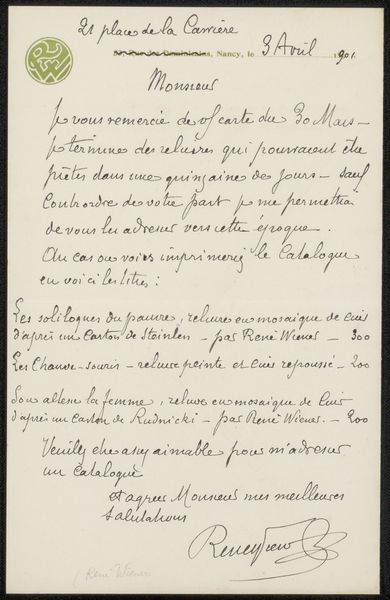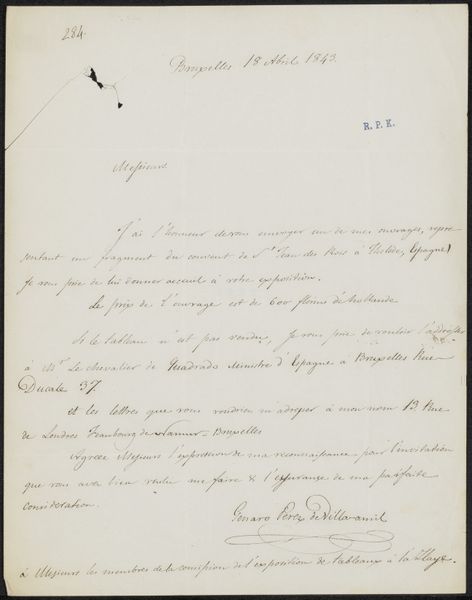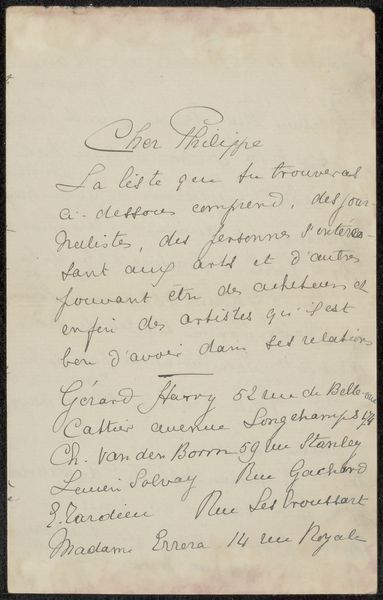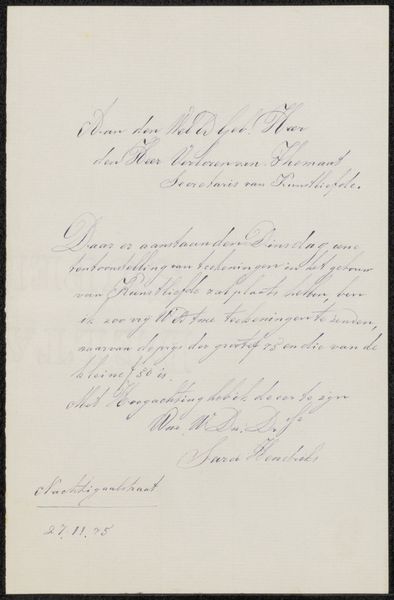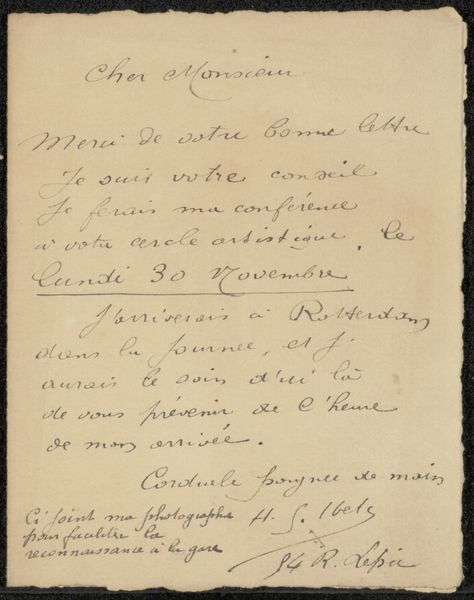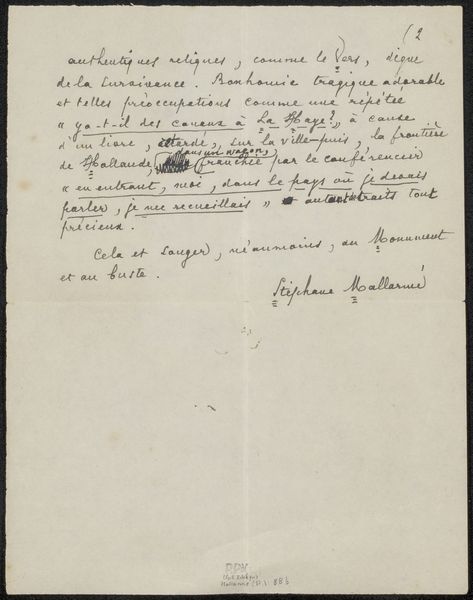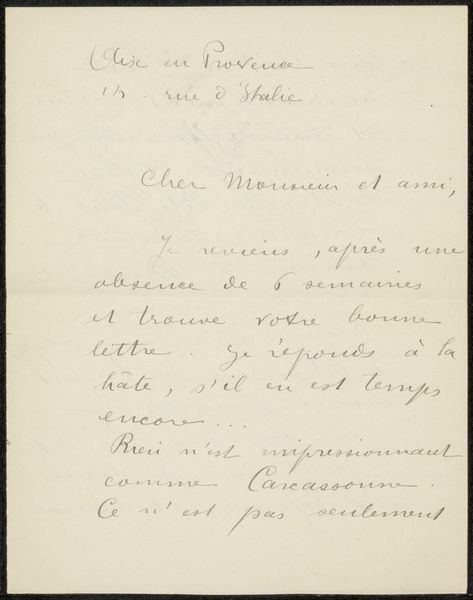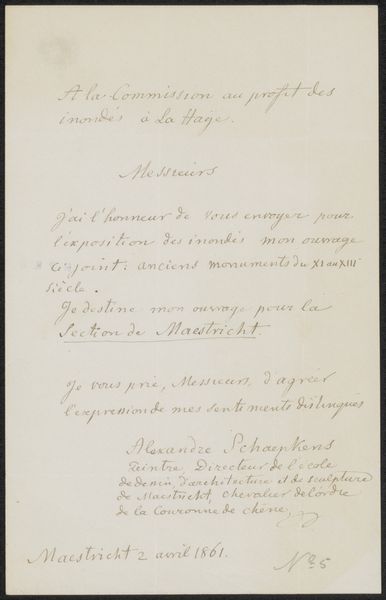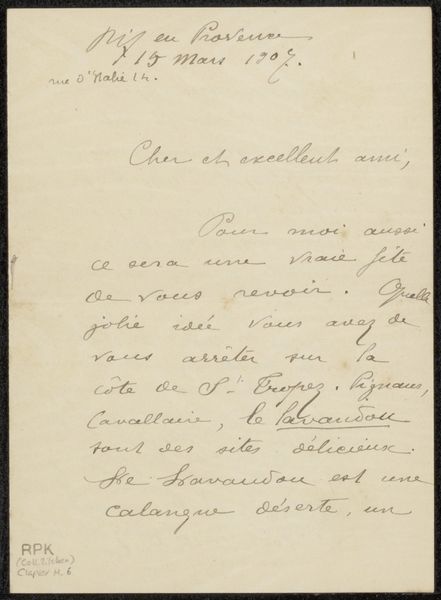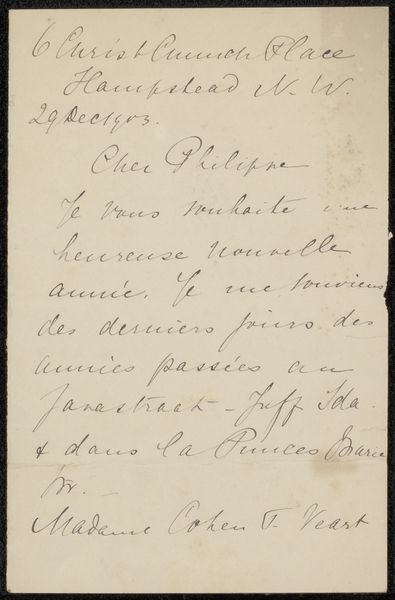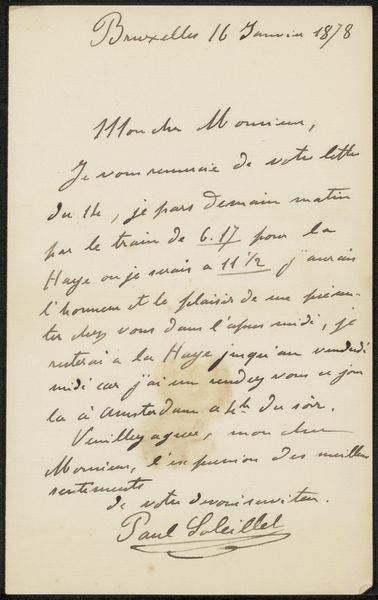
drawing, paper, ink, pen
#
portrait
#
drawing
#
comic strip sketch
#
hand-lettering
#
old engraving style
#
hand drawn type
#
hand lettering
#
paper
#
personal sketchbook
#
ink
#
intimism
#
pen-ink sketch
#
pen work
#
sketchbook drawing
#
pen
#
academic-art
#
sketchbook art
#
calligraphy
Copyright: Rijks Museum: Open Domain
Curator: Oh, this looks like something pulled straight from a well-loved personal journal. There's a gentle, handwritten quality. What do you make of it? Editor: The immediate impression is one of restrained elegance—like glimpsing a secret world carefully documented. It resonates with the hidden power of unspoken feelings, you know? This is a drawing from Renè Wiener. It's likely he made it sometime between 1901 and 1920. As you can see it’s a letter, drafted in pen and ink on paper, aptly titled 'Brief aan Philip Zilcken.' Curator: A letter… Addressed to Philip Zilcken. That name hums with a forgotten familiarity. I suppose we can observe a wonderful example of something old in here, and old style or hand drawn calligraphy that's rather lovely to my eyes. There's something inherently intimate about it. You almost feel you’re intruding on a private correspondence. Editor: Exactly! The medium of ink on paper underscores that intimacy. But there’s more to it. Letters possess an almost talismanic quality—especially handwritten ones. They become containers of intention, laden with the psychological residue of the writer. Even just the gesture of writing by hand holds significance; it emphasizes the tactile, embodied nature of communication in contrast to our digital exchanges. Curator: You make me think about that specific green symbol that’s at the very top of the image, an artistic signature that brings it all together and feels unique. Did Wiener make a few copies? I’m asking because he specifies amounts and prices as if this letter was some kind of bill. And a high society kind of bill, with artful literature named aphrodite for sale to another refined appreciator. How delightfully mysterious is that? Editor: That detail completely changes the context! We now know that our first intimate impression must share space with economical interests! We cannot extract intimacy from capital as long as the system holds. You made me discover there are little hidden signs of commerce in the text, but that's where symbolism lives. Curator: I appreciate how it's not only communication, but also commodity... It becomes a fascinating cultural artifact, doesn’t it? And now, coming back to our current point in time and speaking directly to our visitors... It serves to invite questions of how we interact today. The exchange lives. Editor: A perfectly succinct final touch! The letter becomes an invitation, beckoning viewers to weave their own threads into the ongoing narrative of art, communication, and human exchange across time.
Comments
No comments
Be the first to comment and join the conversation on the ultimate creative platform.
